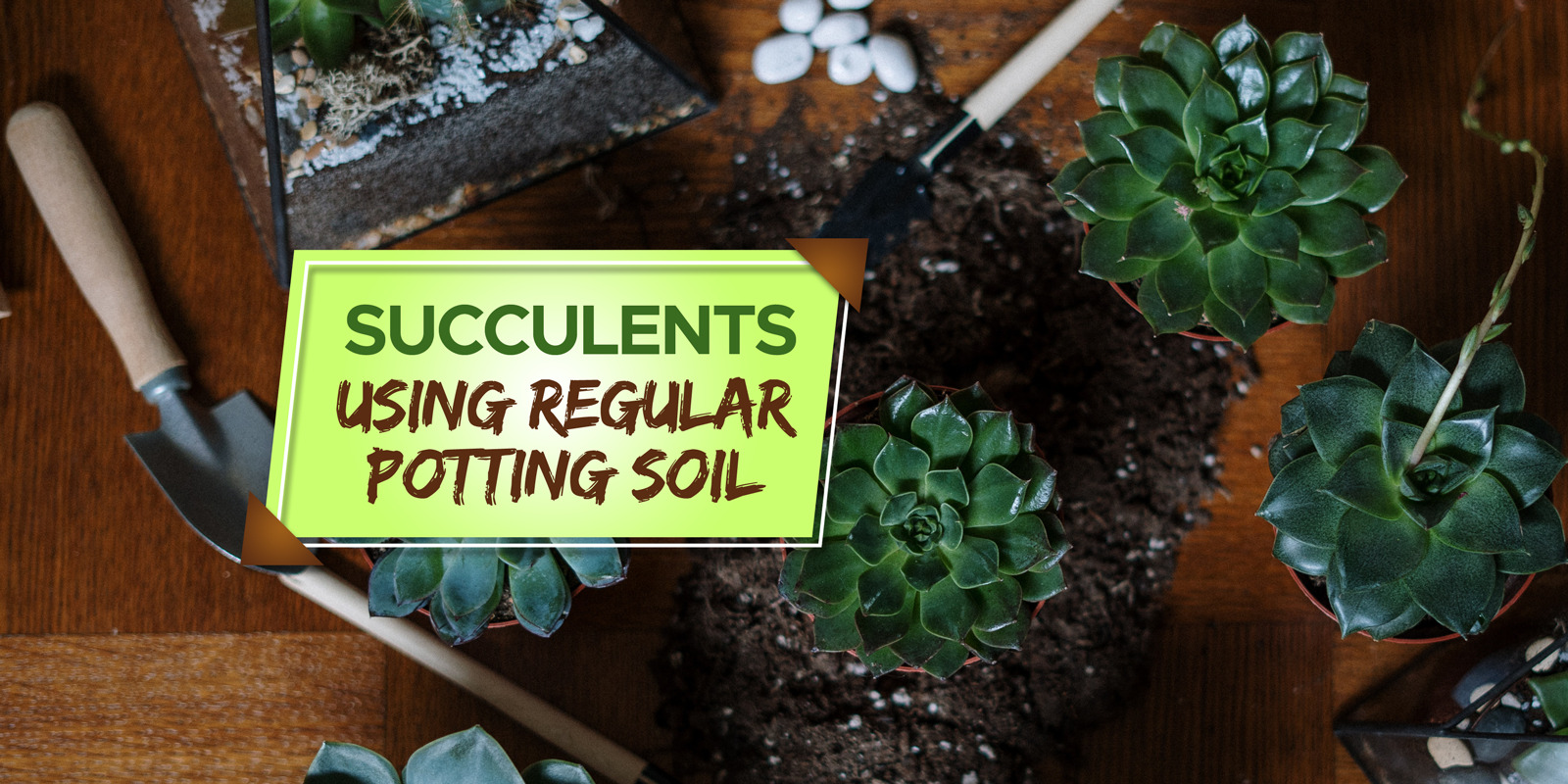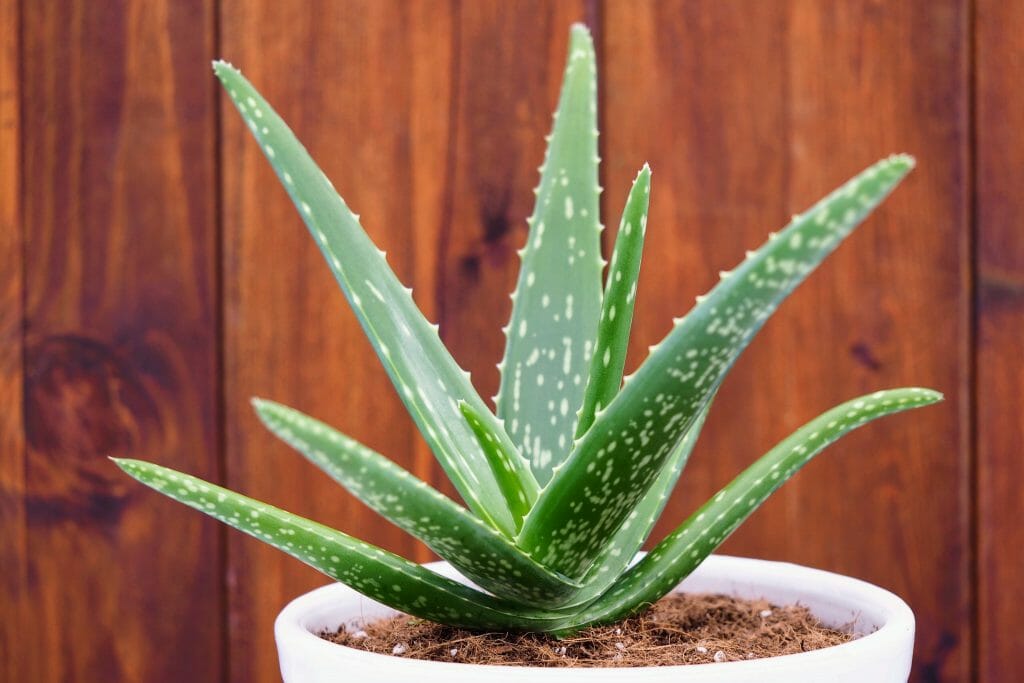Check out my succulent soil for beginners guide. It covers everything you need to know about preparing and layering soil for happy, plump and growing succulents.
Regular potting soil works perfectly for succulents since they don’t need any special high nutrient soil. As long as the soil drains well, your succulents will be happy.
Let’s break down each element for the best indoor potting mix for succulents.
Finding the Right Potting Soil Mix for Succulents
What soil should I use for succulents? Ask 10 different succulent plant parents and you will get 10 different recipes for soil.
There is no single magical potting mix for succulents. The right combination depends on the specific variety, whether they are growing indoors or outdoors, the amount of airflow, temperature and moisture in the air.
But I do have a few general guidelines. Take these tips to help you experiment with different potting mixtures.
Succulent Soil Mix Part 1: The Right Potting Soil
Potting soil can contain a variety of ingredients in endless combinations. There are 3 basic guidelines for choosing a potting soil for succulents.
- Choose potting soil without vermiculite to avoid too much water retention.
- Coco coir is better than peat moss since it is more eco-friendly and drains better.
- Opt for airy, fast-draining soil mixtures instead of heavy nutrient-rich soil.
Any ingredient that is used to retain soil moisture and slow down drainage is a no-go for succulents. It may feel counter-intuitive to choose a nutrient-poor soil but that really is what is best for your succulent.
Succulent Soil Mix Part 2: Mineral Content
The choice of minerals is almost more important than the choice of substrate. These are my recommendations.
- Builder’s sand is an excellent budget choice but choose the most coarse option.
- Perlite, pumice & lava rock are all good drainage minerals and can be combined.
- The correct potting soil:mineral ratio is 1:2 for most succulent types.
Good soil mixtures for succulents have a relatively high mineral content compared to other plants. This is because they allow for faster drainage and are less likely to attract pests.
How to Prepare Soil for Succulents
Now that you have a better understanding of the different components, you can buy potting soil with confidence or even create your own recipe.
Check the composition of the potting soil that you bought and adjust accordingly. For example, add more perlite or pumice if the soil is fine and heavy. Combine with sand if the mixture is extra high in nutrients.
Trust the ideal ratio of 1 part potting soil to 2 parts minerals when creating your succulent soil mixture. This rough estimate is easy to remember and simple to measure.
Combine the components in a bucket with a lid. This way you only have to make the soil mixture once and will have it ready for the next succulent that needs repotting.
DON’T MISS: Click here to find out if potting soil expires.
How to Layer Soil for Succulents
If you have a good potting soil mixture, there is no need to layer a succulent planter. In theory, you already have well-draining soil so there is no need for extra drainage layers inside the pot.
Also, most succulents thrive in shallower containers so there isn’t much space for layers to begin with. They are easy houseplants to keep so don’t overthink it.
What Do You Put in the Bottom of a Planter for Succulents?
You don’t need to add a different layer at the bottom of a succulent planter. What is more important is whether the pot has drainage holes or not.
If it doesn’t, create 1-3 holes ASAP. Also check whether the height is suitable for the roots of your succulent.
What Do You Put on Top of Soil for Succulents?
Unlike orchids, succulents don’t require much extra protection on its top layer. However, if you want to protect it from pests, it may help to add a thin layer of sand on top.
Decorative stones or gravel are another option. These materials don’t retain moisture and deter damaging little creatures from nesting.
Can You Plant Succulents in Just Soil?
You sure can!
If you are still feeling a little lost on the different types of potting soil and succulent soil layering then don’t stress yourself out more than you need to. For a beginner, it is fine to start with regular potting soil.
As you get to know your plant, you will start to see the signs of what it needs. Look up how your specific type of succulent reacts to underwatering, overwatering and different types of nutrients in the soil so you can monitor more closely.
When it shows signs of distress, you can start experimenting with different soil compositions. But chances are that you won’t even need to.
Frequently Asked Questions:
Can You Use Cactus Soil for Succulents?
Although cactus soil and succulent soil are often sold in the same bag, they are not ideal for succulents. There is a risk of cactus soil retaining too much water deeper down the pot.
What Is the Best Fertilizer for Succulents?
Succulents have little need for fertilization. If you do want to fertilize your succulents choose a fertilizer that is low in nitrogen and dilute the mixture to about half its strength.
Can You Put Sand on Top of Succulents?
Adding sand as a top layer of potted succulents is common. It may help with drainage and preventing small pests from feeding on the organic components in the soil.
Summary
Succulents are low maintenance houseplants that grow without any problems in regular potting soil. What you do need to pay attention to when choosing a potting soil for succulents are:
- How well its ingredients drain water
- Whether it contains enough minerals or needs minerals added
- Whether it contains fertilizers
- How course and airy the texture is
Keep these four main elements in mind when shopping for succulent potting soil and you’ll have one happy plant in your room.




